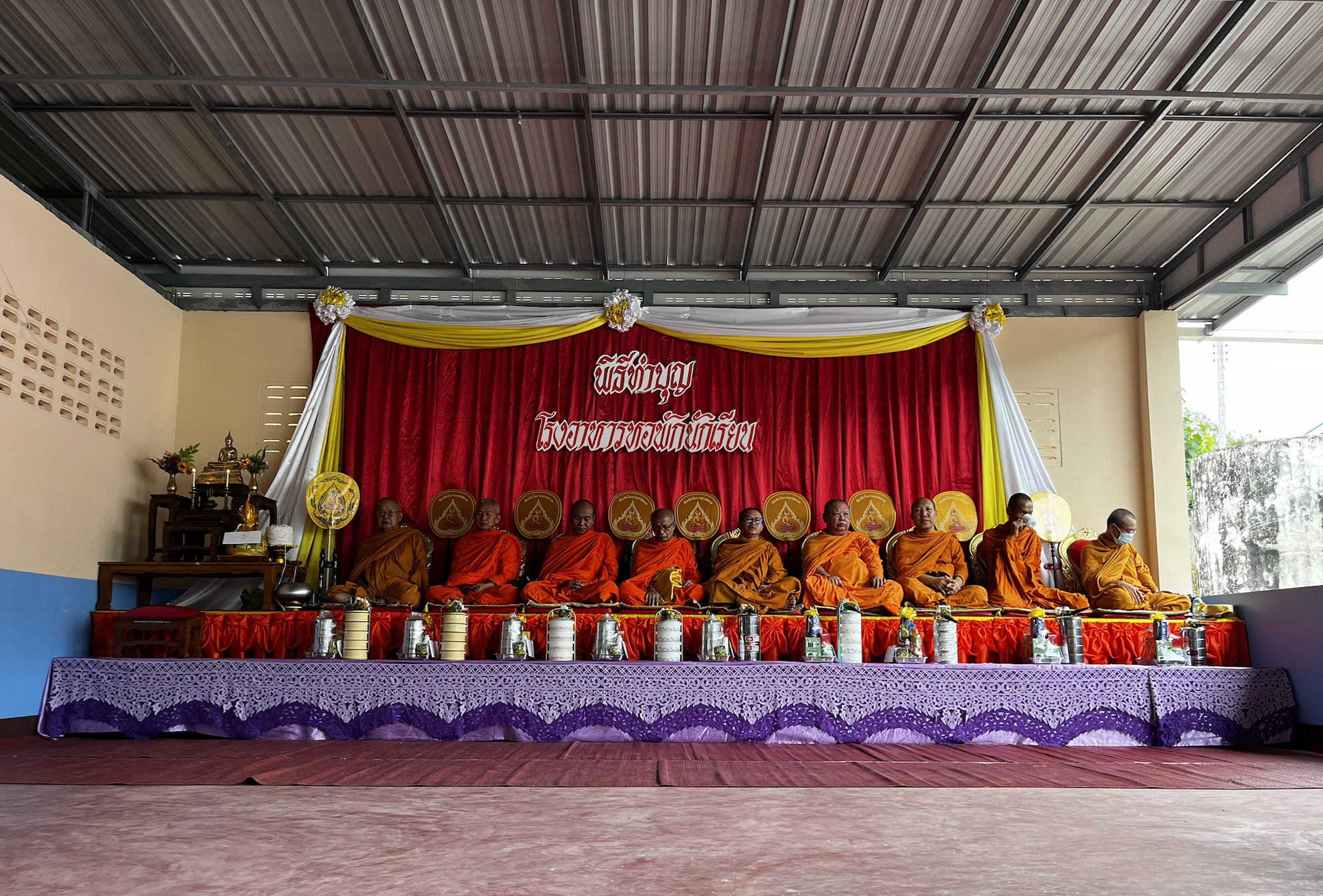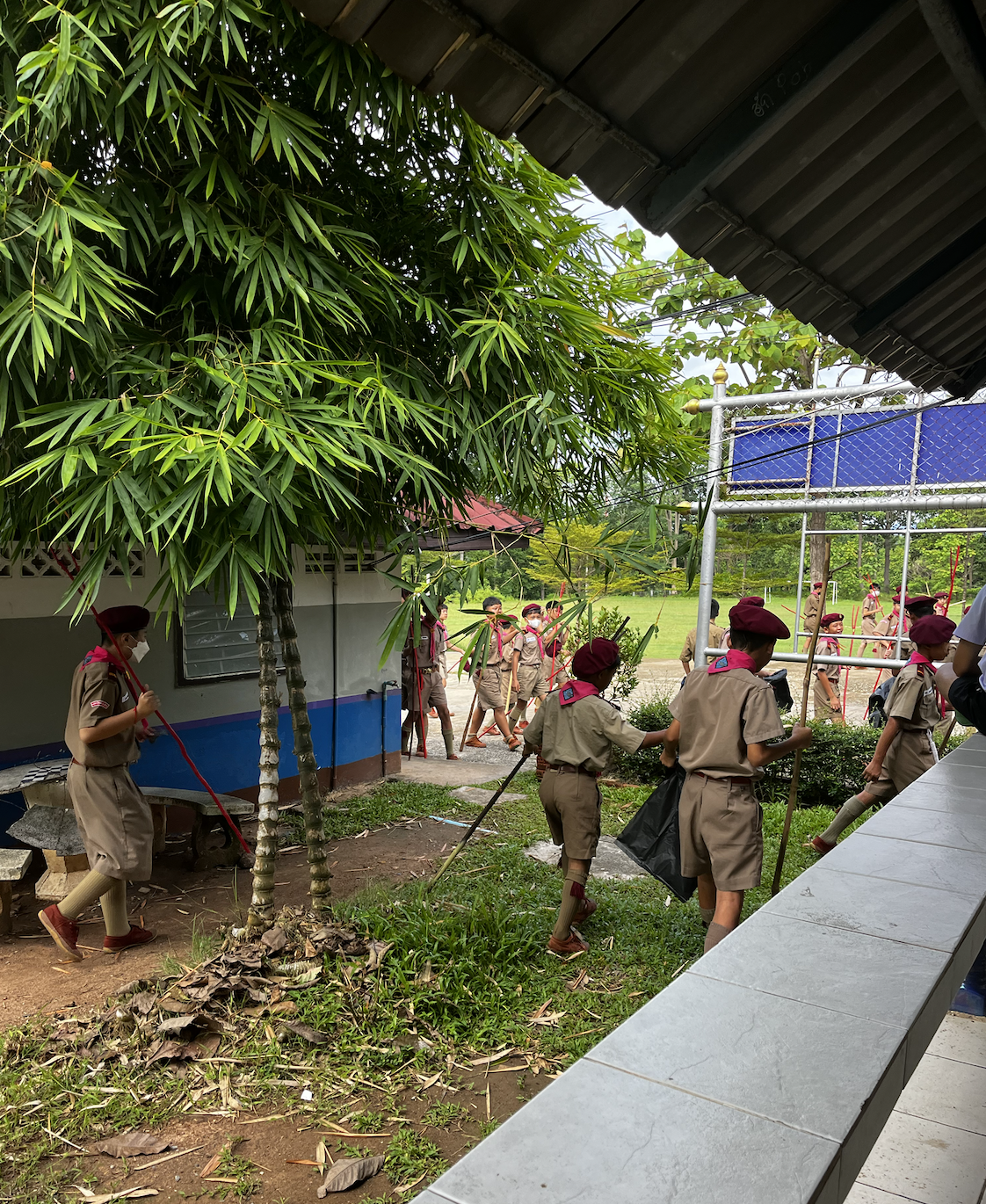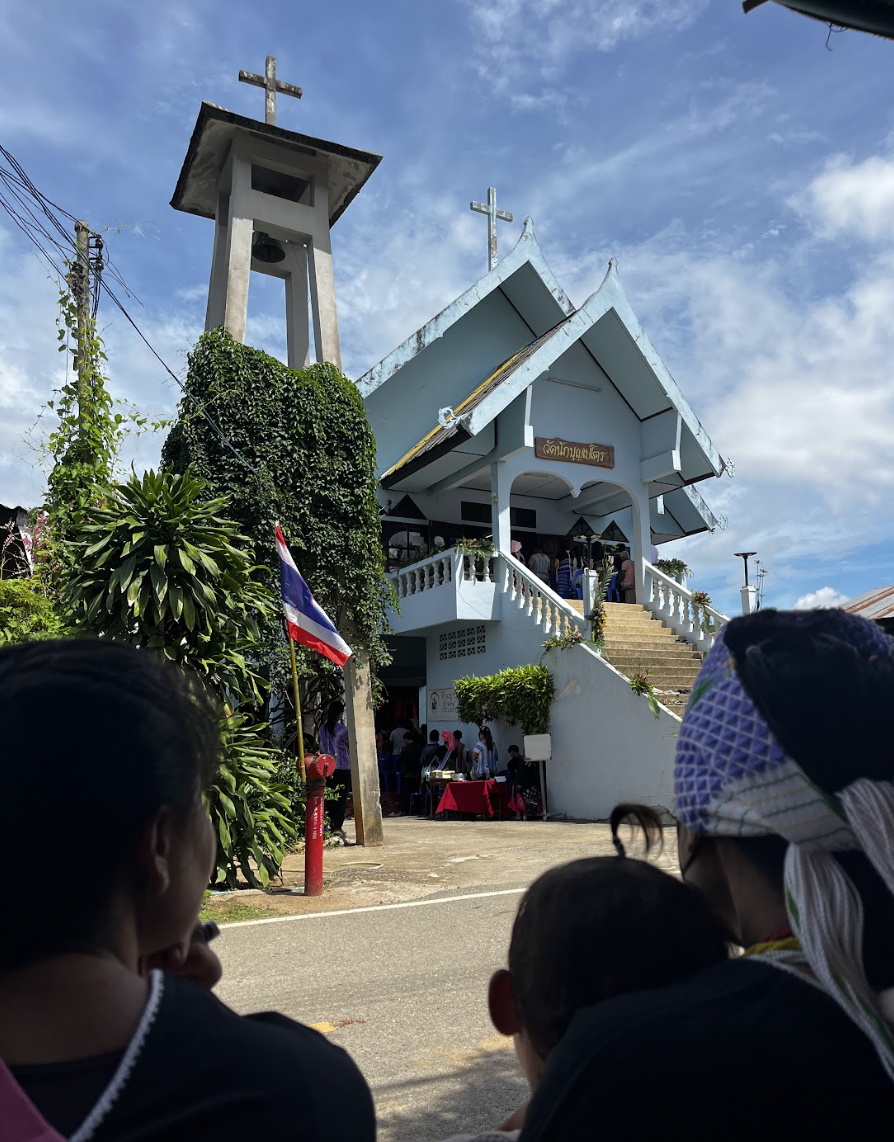Blog Post: Culture in Northern Thailand by William & Mary Freeman Intern Fellow Myra Simbulan
Working at Mae La Noi Daroonsik School (MLNDS) has allowed me to witness the respect that children hold for their elders, specifically, the respect towards teachers from the students. Although there are the occasional moments of sassiness from the students, it’s always heartwarming to see the children take responsibility for maintaining the cleanliness of their classrooms. The students often sweep the floors, pick up trash, and even assist the teachers in wiping the chalkboards after class. The crazy part is that the teachers don’t ask, the students do this on their own accord. Additionally, all students practice the act of removing shoes before entering the building, which not only showcases the importance of cleanliness but also represents a cultural norm in Thai society. In many public places, like homes, temples, and stores you also take your shoes off for cleanliness.
At MLNDS, there is the implementation of school uniforms that correspond to each day of the week. This practice not only fosters a sense of belonging and unity but also reflects attention to detail and organization within Thai culture. Additionally, the presence of cub scouts in the school introduced me to a traditional initiation ceremony, providing a glimpse into the community's commitment to instilling discipline and character in their youth. Furthermore, a considerable portion of both the student and teacher population holds a deep admiration for Americans, particularly drawn to their light and fair complexion. Despite Thailand's history of remaining uncolonized by European or other external powers, it becomes evident how Western culture influences the East in various ways. This influence is particularly evident in the architectural landscape of Thai cities, as I have personally witnessed during my time in Chiang Mai.
I was lucky enough to explore Chiang Mai with my family before starting the internship. In Chiang Mai, I explored the historical temples which, as a practicing Catholic, allowed me to appreciate the deep-rooted spiritual traditions and architectural marvels that Thai culture has to offer. Although I have encountered numerous Buddhist figures in America, I was unaware that there are corresponding Buddha postures for each day of the week. And with each pose, you would pay respect to the Buddha that represents the day that you were born. For instance, I was born on June 15th, a Sunday which also happened to be Father’s Day in 2003. Sunday is the “Seven Days Looking - Pang Thawai Net” pose, and much like a Zodiac sign, the day you are born explains aspects of who you are. By being born on a Sunday, I am respectable, wise, loved by friends and family, and am likely to be in a professional occupation. Where it is believed that my lucky day is Wednesday, my unlucky day is Friday, my lucky color is green, and my unlucky color is blue. Yikes! My favorite color is blue! Anyways, discovering this has broadened my understanding of the diversity within Buddhism itself. As a non-Buddhist, it was a humbling experience to witness the devotion and reverence shown by the local population. I was also able to experience the bustling nightlife and tourist attractions in Chiang Mai, whereas Mae La Noi is the complete opposite. As a small and tranquil town, it had a more subdued nightlife scene. There is only one bar in the area, which doubles as a shoe store during the day, then at 5 pm every night, they’re in business to attract the public. Since I’ve been here, I’ve seen enough tourists to count on my fingers, making this an intimate and authentic experience for me.
Religious diversity was another remarkable feature of Thailand and Mae La Noi's culture. While Buddhism prevailed as the dominant religion, Christianity, Catholicism, Islam, and Hinduism also found their place within the community. The presence of numerous monks in the town shattered my preconceived notions of their lifestyle. Contrary to the traditional image portrayed in media, I discovered that monks in Thailand lead lives that are not dissimilar to our own. It was fascinating to observe them seamlessly blend their spiritual practices with the use of modern technology, such as phones. Recently, MLNDS built a new canteen near the girl’s dormitory, where we held a ceremony as the monks came to bless the new canteen. It was the first-ever monk blessing that I’d gotten to witness, and though I could not understand what was being said, the ritual and practice were truly beautiful.
Language plays a pivotal role in bridging the diverse cultural backgrounds of Mae La Noi. Situated near the Myanmar border, the town is home to a variety of languages, including Karen, Hmong, Lawa, Karen, and Shan. However, English serves as the common denominator, and Thai as the lingua franca (bridge language) due to its prevalence in the region. Even during Mass, where attendees speak different languages, Thai is the medium of communication, uniting the faithful in their shared devotion. This past Sunday, Rehanna accompanied me to Mass, where, instead of listening to Mass, we observed. This experience demonstrated the universality of religious practices, transcending language barriers and reaffirming the power of faith to bring people together.
Lastly, regarding Thai cuisine, the food here is known for its bold and flavorful spices, offering a stark contrast to “American” cuisine. Rehanna and I have been trying very hard to grow our spice tolerance. America is the home of many ethnicities and cultures to the point where our food is a melting pot influenced by Europeans, Indigenous Native Americans, Africans, Asians, Pacific Islanders, and many other cultures and traditions. Recently, Rehanna and I decided to give some other teachers an “American” styled dinner. When we initially thought of this idea, the first thing that came to our mind was the classics like burgers, fried chicken, hot dogs, and pancakes/waffles. However, we surprised them with a delightful spread of Mac & Cheese and Mozzarella sticks. While they enjoyed our gesture, it was no surprise that they yearned for a touch of spice to enhance the flavors.
Overall, my time in Mae La Noi has been a testament to the richness and beauty of culture, reminding me that our world is a tapestry of diverse traditions waiting to be explored and celebrated. With 6 more weeks in Mae La Noi, I hope to experience more of the beautiful culture here in Thailand!



